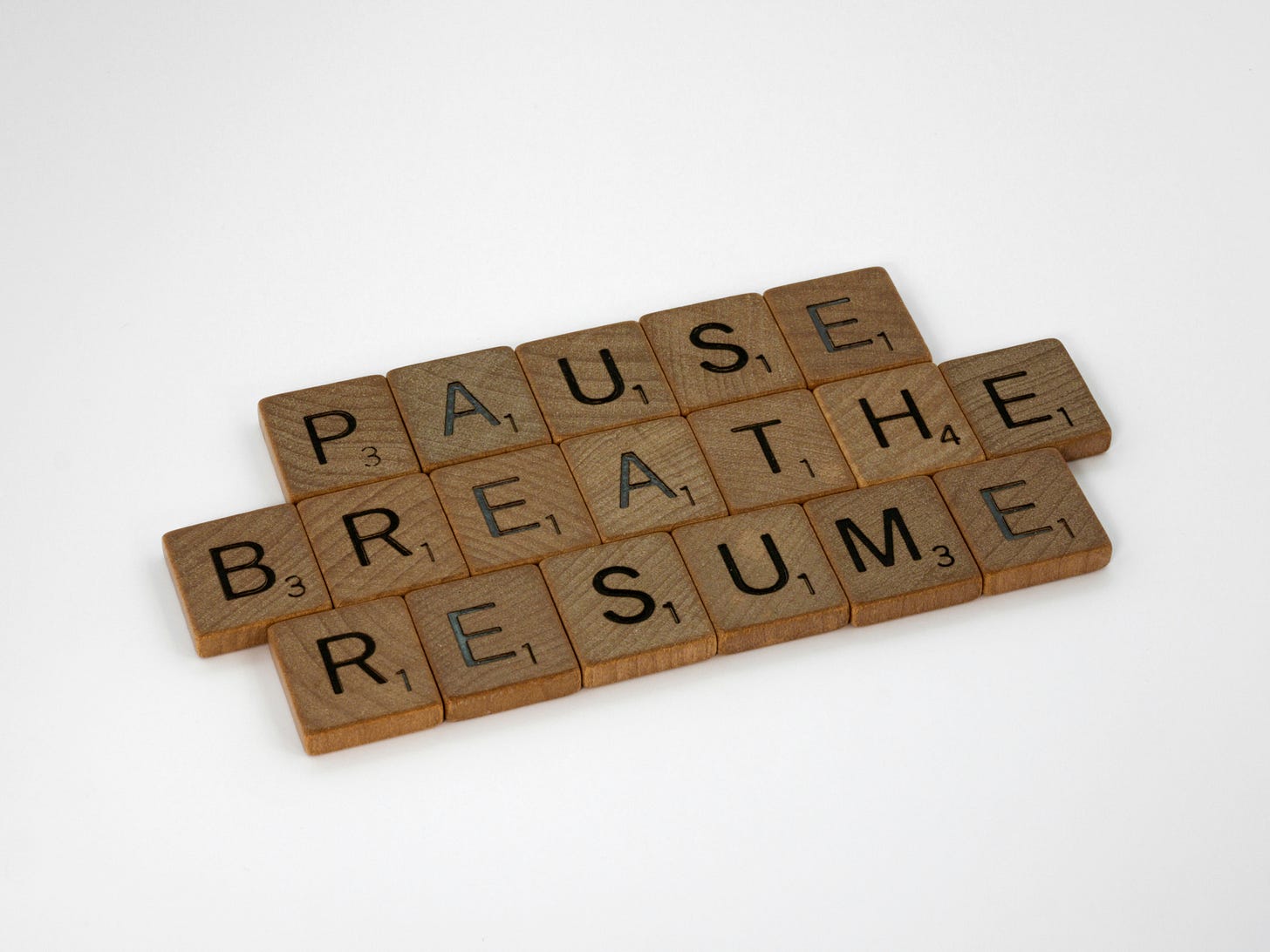The Power of Pause
Placing strategic pauses throughout your day helps you stay fresh, focused, and engaged.

Editor's Note: This is a guest post by Todd Henry of Accidental Creative.
Several years ago my media consumption habits were turned upside down when a friend introduced me to the wonders of the DVR. Though it seems almost laughable now, up to that point if I wanted to watch a television show, movie or sporting event I had to be physically present at my television during the time of broadcast. This meant that if a particular show or event was important to me, I had to plan my life around it. (That said, during the 1990's my Thursday nights were mostly a wasteland. Thanks NBC.)
In addition to simply recording shows, the other very powerful DVR feature was the ability to pause live TV. This meant that there was never a need to miss a minute of any show, because I could simply pause it and return to it at my leisure. I was no longer at the mercy of the SVP of Programming at some network. Instead, I could enjoy shows at my leisure, on my own terms.
Sometimes I find that it's easy to treat my life much like I treated television pre-DVR. It's easy to feel at the mercy of my work, my clients and even the self-imposed pressure that I feel to deliver value. These dynamics tempt me to squeeze work time into every square inch of my life and over time cause me to become less effective at everything because I have little to offer. However, I've also discovered the power of pause in my everyday life to help me stay engaged, focused and energized.
Here are a few strategies that have worked well:
Pause Strategy #1: Daybreak
It's tempting to roll out of bed and grab my phone or immediately head to my computer to see what I missed overnight. I've learned, however, that those first several minutes of the day can be an effective time for re-centering myself, reaffirming my goals for the day and starting the day off with a positive push. When I jump too quickly into whatever is waiting in my inbox, I find that I'm immediately in reactive mode. Taking the first several minutes after waking up to acclimate to my day reminds me that I'm not at the mercy of everyone else's agenda.
Pause Strategy #2: Between Meetings
Some teams love to stack meeting after meeting throughout the day. The net result is that each successive meeting gets less effective as energy wanes. Whenever I have say over the matter, I like to schedule at least a ten minute buffer between meetings to re-energize, re-focus and get my body moving again. This goes for phone calls too. I tend to schedule meetings in 45 minute increments rather than the traditional 60. I've discovered that others find this refreshing as well, as it makes meetings more focused and creates an urgency to get to the point.
Pause Strategy #3: End Of Day Buffers
At one point in my life I would rush out of the office at the end of the day, make a few phone calls on my way home, walk into the house while still carrying on a conversation, and then make a quick transition to dinner with my family. This meant that whatever stresses I carried with me from work were directly transferred to my family. I had to develop the practice of building a buffer between my work and home life.
On especially stressful days, this may mean stopping off at a bookstore for ten minutes on the way home. Sometimes it simply means riding in silence in the car to collect my thoughts and relax. The main principle is to interject a pause in between significant shifts of focus so that there is no residual effect from one to the other. This has really helped me give my family the proper focus and energy it deserves.
Manage your time and energy well. Don't fall prey to the trap of feeling the need to be on-demand all the time. Placing strategic pauses throughout your day is a very effective strategy for staying fresh, focused and engaged.
These are just a few strategies that have worked for me. Are there any "pause strategies" that you've found effective?



